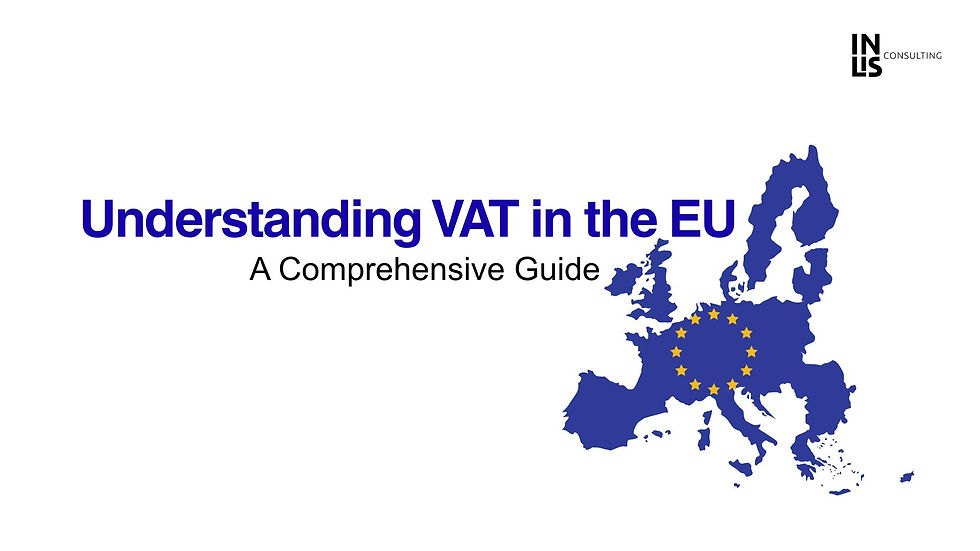EU’s Digital Travel Law: What It Means for Visitors to Portugal
- INLIS Consulting
- Jul 31
- 3 min read
As of late 2025, Portugal and other Schengen states will fully adopt the EU Entry/Exit System (EES)—a biometric border-control framework replacing passport stamps with digital registration.

Non‑EU nationals will now have their entry and exit logged electronically alongside biometric data. This milestone aligns with EU regulation priorities and sets the stage for enhanced security and efficiency at all external Schengen borders.
Understanding the EES: Legal Framework & Timeline
Regulatory Basis
Regulation (EU) 2017/2226 mandates the creation of the EES, which records personal and biometric data whenever a non‑EU national enters or leaves the Schengen Area.
The system will launch progressively from October 12, 2025, with full deployment by April 10, 2026, per EU Council decisions.
What It Captures
Each crossing will register:
Full name, travel document info, nationality, entry and exit timestamps
Biometric data: fingerprint scans and facial images
Refusals of entry and stay-compliance tracking.
Portugal’s Rollout: What Travelers Should Know
On-the-Ground Implementation
Portugal has already deployed EES equipment at key border points as of May 2025. Full enforcement begins October 2025
A gradual six-month rollout ensures all member states, including Portugal, are fully compliant by early 2026.
Impact on Travelers
No more passport stamps: Your arrival and departure are recorded digitally.
Expect new procedures: First-time arrivals may see longer processing times. Biometric data is required once, then used during return visits for up to three years (or until passport expiration)
Children under 12: Only a photograph is taken, no fingerprints.
For US Citizens Visiting Portugal: What You Need to Know
If you’re from the US in Portugal, here’s how these reforms will affect your travel:
You must present a biometric passport; otherwise, expect additional checks.
On your first border crossing post-rollout, biometric data will be captured. Future entries will be smoother within the validity period
American travelers will no longer receive stamps at Portuguese (or any Schengen) borders; everything is digital
Looking Ahead: ETIAS & the EU Digital Travel App
ETIAS Authorization
Starting in late 2026, many visa‑exempt nationals—like US citizens—will need to register via ETIAS before visiting Portugal or other Schengen countries. This system is similar to the US ESTA, with a small fee (around €7) and a multi-year validity.
EU Digital Travel App
Planned digital credential platform to store digital passports or ID cards (photo only, no fingerprints).
Optional and free to users, this tool aims to streamline border checks and reduce waiting times.
Quick Summary Table
Feature | Timeline | Applies to | What Travelers Should Know |
Entry/Exit System (EES) | Oct 2025 – Apr 2026 | Non‑EU nationals | Biometric capture, no stamping |
First-time biometric scan | First entry after rollout | US in Portugal | One-time capture; expedited re-entry |
ETIAS authorization | Late 2026 | Visa-exempt third-country nationals | Requires online registration & fee |
EU Digital Travel App | Pending adoption/standards | EU & non‑EU travelers | Optional digital credential storage |
Final Thoughts
Portugal’s adoption of the EU Entry/Exit System marks a key shift in border policy. If you're a US citizen travelling to Portugal, prepare for digital checks rather than stamps, and expect smoother entry once your biometric data has been registered.
With ETIAS arriving in late 2026, extra layers of advance authorisation will enter the picture, so consider booking early and applying ahead.
Have questions about entering Portugal as a US citizen in Portugal, or need guidance on digital travel credentials? Just ask!




Comments